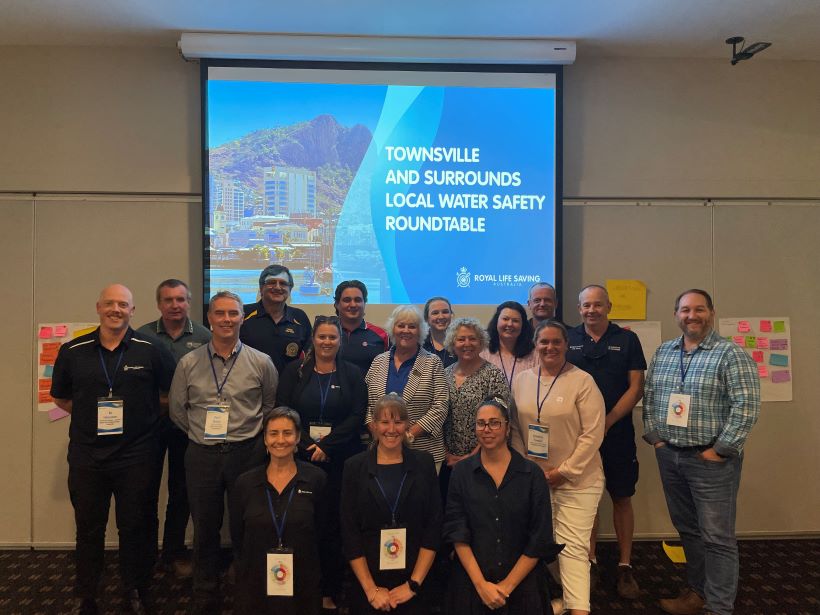Published 18 August 2022

Townsville residents are being encouraged to get involved in new research to help reduce fatal and non-fatal drowning in the region, as part of the first Australian local water safety plan. Getting involved to help to reduce drowning is as simple as completing an online survey.
The call for Townsville residents to complete a quick online survey comes as water safety experts (pictured) from throughout North and Far North Queensland again gathered in Townsville on Thursday 18 August to progress the water safety plan, which is being designed to meet the specific needs of the region.
Townsville and surrounds were selected because of the very high drowning rate in the region during the past decade. Since the last roundtable held in May 2022, the water safety expert group has grown to include representation from more agencies and other stakeholders, including local swim schools, councillors and state and federal government authorities.
Royal Life Saving Society – Australia National Manager – Aquatics, RJ Houston, said the variety of recreational areas in the region, including home pools, public pools, rivers, dams, and the ocean needed to be incorporated in the water safety plan.
“The Townsville Local Water Safety Group was established to guide coordinated activities towards improving drowning prevention in the region,” Mr Houston said.
“Royal Life Saving recognises that drowning is a complex problem and that a range of contributions from collaborators and partners is essential to reducing drowning in the long term.”
James Cook University Professor Richard Franklin urged local residents to get involved in the survey.
“We know rivers and swimming pools remain the leading locations for drowning in Townsville at 52 per cent and 22 per cent of local drownings respectively,” Professor Franklin said.
“Men account for almost three-quarters of drowning deaths in the region, and in more than a quarter of all drowning deaths, alcohol had been consumed. Almost 40 per cent of incidents involved an unintentional entry into water, like falling or tripping.
“This tells us that a more dedicated focus is needed to identify who is at risk of drowning, where they are drowning and why they are drowning.”
The survey was co-designed by James Cook University, the University of New South Wales and Royal Life Saving Society – Australia. The survey is live and available to complete here: https://www.surveymonkey.com/r/ZZQB62J
